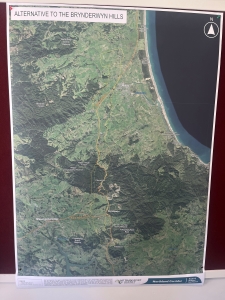Access under the Public Works Act 1981
Entry
Prior to acquisition of land under the Public Works Act it is usual practice for the intended acquirer to carry out at least a land survey and testing/investigation of the land. It does so under powers set out in ss110 to 112 of the PWA.
Basically, owners cannot object to a land survey provided reasonable notice is given, however, they can object to more invasive surveys and land testing/inspection and a District Court can then decide what is reasonable and necessary.
Land survey
For a survey of the land under s110 the Minister or local authority shall, where practicable, give reasonable notice to the owner or occupier of the land, as the case may require, of the intention to exercise those powers. The relevant person(s) may then subject to the limitations of any authorisation so granted, enter and re-enter any land at reasonable times, with or without such assistance, aircraft, boats, vehicles, appliances, machinery, and equipment as are reasonably necessary for making any survey in accordance with survey.
There is limited ability for a land owner to prevent or interfere with the survey. A relevant court decision on s110 is Gibbs v NPDC (HC, New Plymouth, 20 December 2011, civ2011-443-529, Woodhouse J).
More survey and testing
For work other than basic survey work s111 sets out the process. An authorised person may, for the purposes of carrying out any public work or any proposed public work, and subject to the limitations of any authorisation so granted—
(a) Enter and re-enter any land at reasonable times, with or without such assistants, aircraft, boats, vehicles, appliances, machinery, and equipment as are reasonably necessary for making any kind of survey or investigation:
(b) Dig and bore into the land and remove samples of it:
(c) Erect temporary buildings on the land:
(d) Set out the lines of any works on the land.
Unless the owner and occupier of the land otherwise agree, the above powers shall not be exercised unless the owner and occupier of the land affected have been given 10 working days’ notice in writing of—
(a) How and when entry is to be made; and
(b) The specific powers intended to be exercised; and
(c) A statement of the owner’s or occupier’s rights under subsection (4) of this section; and
[(d) A statement that the owner or occupier may be entitled to compensation under this Act.]
The owner or occupier may, within 10 working days after receiving the notice and after giving notice to the Minister or local authority, as the case may be, of his intention to do so, object to the District Court nearest to the land concerned, and the Court may summon the Minister or local authority, or his or its representative, to appear before the Court at a time and place named in the summons.
If it appears to the Court that the proposed survey or investigation is unreasonable or unnecessary the Court may—
(a) Order that the survey or investigation shall not be undertaken, or shall not be undertaken in the manner proposed; or
(b) Direct that the survey or investigation be undertaken in such manner and subject to such limitations and restrictions as the Court thinks fit—
and all persons concerned shall be bound by any such order.
The Act is broadly enough worded to authorise inspections for the purpose of ascertaining the suitability of the site. Investigations as to suitability are permitted for the purposes of “carrying out” the public work. Investigations must be completed before construction etc. Likely this forms a necessary part of the public work, a proper examination of the site and assessment of its suitability being a part of the operation. The test to be applied having regard to the provisions of both sections, is whether the entry on to the land in these circumstances is reasonable or necessary.
A relevant court judgment on s111 is Pengelly’s Marketing Ltd v AG (DC, Otahuhu, 13 November 1998, NP453/98 Field DCJ).



